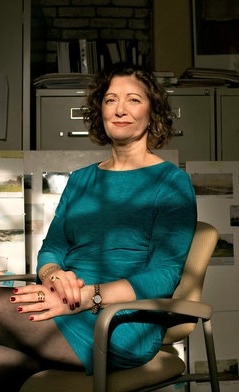“The puzzle I had was, how did an artist who grew up studying Rembrandt and observing the landscapes of Corot and Rousseau end up painting like an Impressionist?†That is Lynne Ambrosini, the director of collections and exhibitions and curator of European art at the Taft Museum of Art, speaking. She is talking about her exhibition, “Daubigny, Monet, Van Gogh: Impressions of Landscape,†which opened on Feb. 20, which is the subject of the narrative I wrote about the show for The New York Times‘s annual Museums section, published in print on March 17.
 The story shows all the frustrations and all the joys of curating a major exhibition at a small museum–and that’s why I loved doing it. Going behind the scenes helps the public understand museums, and spotlight a small museum like the Taft makes it even better for me. This country has many good to great museums, and they receive too little attention, imho.
The story shows all the frustrations and all the joys of curating a major exhibition at a small museum–and that’s why I loved doing it. Going behind the scenes helps the public understand museums, and spotlight a small museum like the Taft makes it even better for me. This country has many good to great museums, and they receive too little attention, imho.
For this show, the Taft partnered with two much larger institutions–the Van Gogh Museum in Amsterdam and the Scottish National Galleries in Edinburgh. Both museums, knowing little if anything about the Taft, sent their own staff to the Cincinnati to inspect the Taft. It’s natural that they wanted to see the physical place and get a feel for the culture of a partner. They are known world-wide.
But as I made that point to Larry Nichols, the senior curator of European and American painting and sculpture before 1900 at the Toledo Museum of Art, he agreed but added perspective. “Those are big-deal museums,†he said. “But the Taft is a big-deal small museum. Most things hanging in the Taft could hang in the Louvre.†I’ve visited the Taft once–not for this article–and was indeed impressed. You can see some of its collection online.
Aside from showing that little museums “that could” should go big when they can, the story makes several other points, including:
- The importance of conservators’ views; ,many time, Ambrosini mentioned to me how key her discussions with them were. They helped her make discoveries about Daubigny’s techniques and his influence.
- Just how critical being in the network of curators is; I hope this encourages small museums to let their curators travel.
- The passage where Ambrosini hears from trustees on the need for Impressionist paintings to make her point about Daubigny is important: she knew, and I believe told them, that costs would rise because of it. But they all wanted to do it right–taking as few shortcuts as possible.
Unfortunately, I have not seen the show in the flesh–just in the catalogue. But Deborah Emont Scott, the Taft’s director, who first visited me about the show in October, 2014, wrote yesterday: “The show is doing so well — everyone loves it, and many visitors leave telling us that they need to see  it again and again.  Some have already seen it  two and three times!  Many are thanking us for introducing them to Daubigny!”
Somewhere in his grave, Daubigny is, finally, smiling.
I want to add another point about museums: in researching the story, I recalled the Origins of Impressionism exhibition at the Met in the 1990s. Looking around my bookshelves, I could not find the catalogue, which means I didn’t buy one. But the Met has put the book online for free and I was able to read the sections I needed to without leaving my desk! What a great help that was.
Photo Credit: Courtesy of The New York Times
